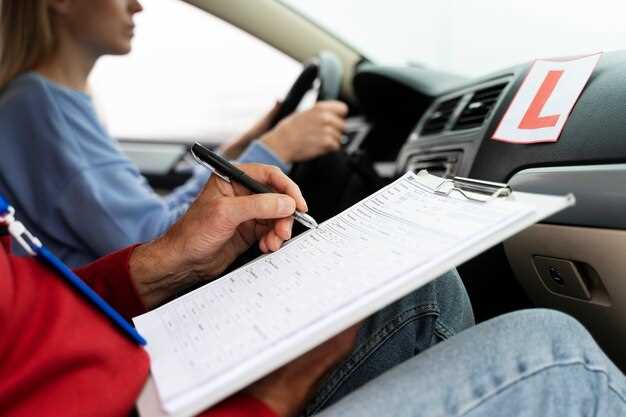
When it comes to evaluating a vehicle that is not part of a standard fleet, having a well-structured guide is essential. This is particularly true for unique vehicles that may have custom modifications or specialized features. A one-off evaluation requires a comprehensive approach, as the conventional metrics used in mass assessments may not apply effectively. Therefore, a distinct inspection checklist tailored for these unique vehicles can make a significant difference in the evaluation process.
Creating a custom checklist allows evaluators to focus on the specific attributes and potential issues that a unique vehicle might possess. Whether it’s a vintage car, a bespoke motorcycle, or a specialized utility vehicle, a well-designed assessment tool will help identify strengths and weaknesses that are not typically considered in standard evaluations. This targeted approach not only enhances the overall inspection process but also ensures that all critical aspects are thoroughly addressed.
In this article, we will outline the key elements of a unique vehicle assessment checklist that will assist in conducting thorough one-off evaluations. By integrating these custom criteria into your inspection process, you can enhance your ability to accurately gauge the value, safety, and performance of unique vehicles, providing a clear understanding for potential buyers and sellers alike.
Key Components to Inspect in Custom Builds

When evaluating custom vehicles, thorough inspection is crucial to ensure safety, performance, and quality. This guide outlines the essential components that require careful scrutiny during the inspection process.
Frame and Chassis: The integrity of the frame is fundamental to the vehicle’s overall safety and handling. Inspect for any signs of stress, cracking, or corrosion. Ensure that the chassis aligns with the vehicle’s intended purpose, whether it’s for performance, cargo, or recreational use.
Engine and Powertrain: A custom build often includes engine modifications. Assess the installation quality and verify that all components are securely mounted and properly connected. Look for leaks, signs of wear, and ensure that the engine’s cooling system is functioning effectively.
Suspension and Brakes: The suspension system should match the vehicle’s weight and driving style. Examine the shocks, struts, and springs for compatibility and condition. Additionally, inspect the braking system, ensuring that pads, rotors, and fluid levels meet safety standards. Proper alignment is also critical for handling and tire wear.
Electrical Systems: Custom builds may involve complex wiring setups. Inspect all electrical connections, ensuring they are secure and protected from moisture and damage. Test the functionality of critical components such as lights, instruments, and power accessories. Verify that the battery and alternator are appropriately sized for the vehicle’s needs.
Bodywork and Interior: Check for any imperfections in the body, including paint quality, panel alignment, and welding consistency. A well-finished interior not only enhances aesthetics but also contributes to comfort and safety. Inspect seats, seatbelts, and other safety features to ensure compliance with regulations.
Tires and Wheels: Assess the quality and condition of the tires, ensuring they are suitable for the vehicle’s intended use. Inspect tread depth, sidewall integrity, and alignment. The wheels should also be checked for damage, ensuring they can support the weight and performance of the custom build.
Conducting a comprehensive inspection of these key components will guide you in assessing the overall quality and safety of custom-built vehicles. Attention to detail in these areas can prevent future issues and ensure an enjoyable driving experience.
Documenting Modifications and Enhancements

When evaluating a one-off vehicle, thorough documentation of modifications and enhancements is essential. This detailed record not only provides insights into the vehicle’s current state but also serves as a critical reference for future inspections. Accurate documentation helps ensure that all custom elements are accounted for and understood.
1. Comprehensive Modification Log: Create a structured guide that lists each modification made to the vehicle. Include details such as the type of modification, the date it was completed, and the rationale behind it. This log should be updated continuously as new enhancements are made.
2. Visual Documentation: Accompany the written log with high-quality photographs illustrating each modification. Visual records serve as critical evidence during inspections and can aid in assessing the impact of the changes on the vehicle’s overall performance.
3. Manufacturer Specifications: Whenever possible, reference the manufacturer’s specifications for the original components. This comparison allows for a clearer understanding of how the custom modifications deviate from the original design and function.
4. Performance Evaluations: After each modification, conduct performance assessments to measure the changes in handling, speed, and efficiency. Documenting these evaluations will help determine the effectiveness of the enhancements and provide valuable data for future inspections.
5. Regulatory Compliance: Ensure that all modifications comply with local regulations and safety standards. Document any necessary approvals or certifications, as this will be crucial during inspections and for maintaining the vehicle’s roadworthiness.
By systematically documenting modifications and enhancements, owners can maintain an accurate historical record, thereby facilitating smoother inspections and supporting the vehicle’s value. This meticulous approach to modification documentation will ensure that every custom aspect is well-captured and assessed effectively.
Safety Standards and Compliance Checks for Unique Vehicles
When evaluating unique vehicles, safety standards and compliance checks are paramount to ensure the vehicle operates safely and is roadworthy. The inspection process for custom vehicles may differ significantly from standard vehicles due to their bespoke nature. Therefore, it is essential to follow a comprehensive guide tailored to the specific requirements of unique designs.
The first step in the compliance check involves verifying that the vehicle meets national and local safety regulations. This includes checking for the appropriate modifications, such as braking systems, lighting, and structural integrity, which must align with established safety standards. Any custom modifications should also undergo rigorous inspections to confirm they do not compromise the vehicle’s safety.
Next, a complete inspection of the vehicle’s electrical systems, fuel systems, and emission controls is necessary. These components are critical for ensuring that the vehicle remains environmentally compliant and operates safely. For custom vehicles, specialized knowledge may be required to evaluate these systems correctly, emphasizing the need for trained inspectors familiar with unique builds.
Moreover, conducting a thorough assessment of the materials used in construction and modification is crucial. Certain materials may pose hazards or not comply with safety regulations, leading to potential risks during operation. Proper documentation of materials and their compliance with safety standards should be collected and maintained as part of the evaluation process.
Lastly, the final step involves a roadworthiness test, where the unique vehicle is assessed under real conditions. This test helps identify any issues that surface only when the vehicle is in motion. Documenting the results of this test is vital for ensuring that the vehicle is registered and compliant with regulatory bodies.
In conclusion, performing meticulous safety standards and compliance checks for unique vehicles is essential for their operational integrity. By adhering to structured guidelines and ensuring thorough inspections, custom vehicles can be deemed safe and ready for use on public roads.




